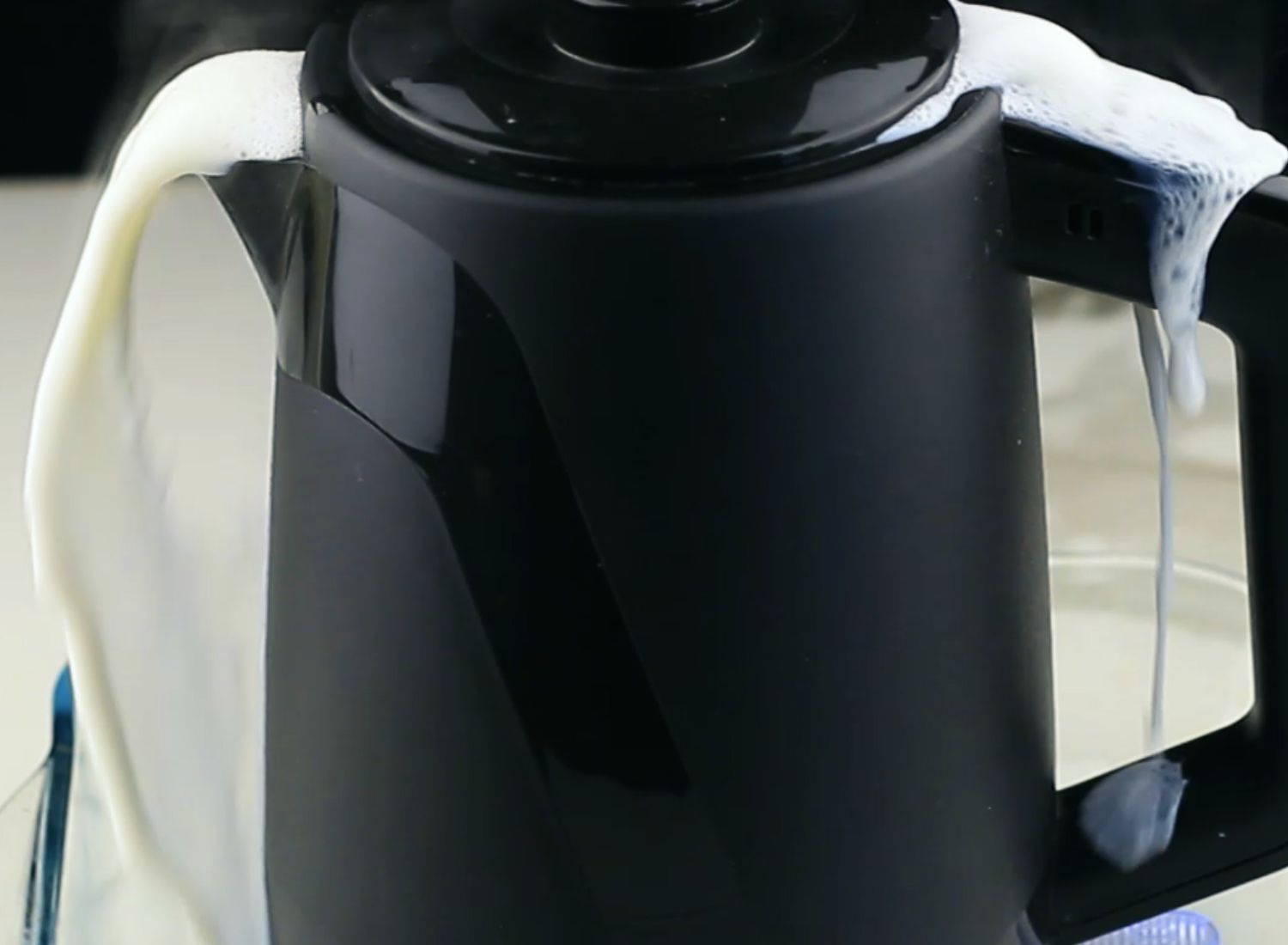The Kettle Chronicles: Can You Boil Milk In An Electric Kettle or Are You Steaming Towards A Milky Mess?
Are you facing a milk-boiling conundrum with no stove or microwave in sight? Picture this: You want a steaming cup of milk, but your options seem limited. Suddenly, your eyes land on the trusty kettle sitting on your countertop, giving you a glimmer of hope.
But before you surrender to this unconventional idea, you can’t help but wonder: Is boiling milk in the kettle a genius hack for the kitchen or a recipe for disaster that will leave your kettle in ruins?
First Things First—Can You Boil Milk in an Electric Kettle?
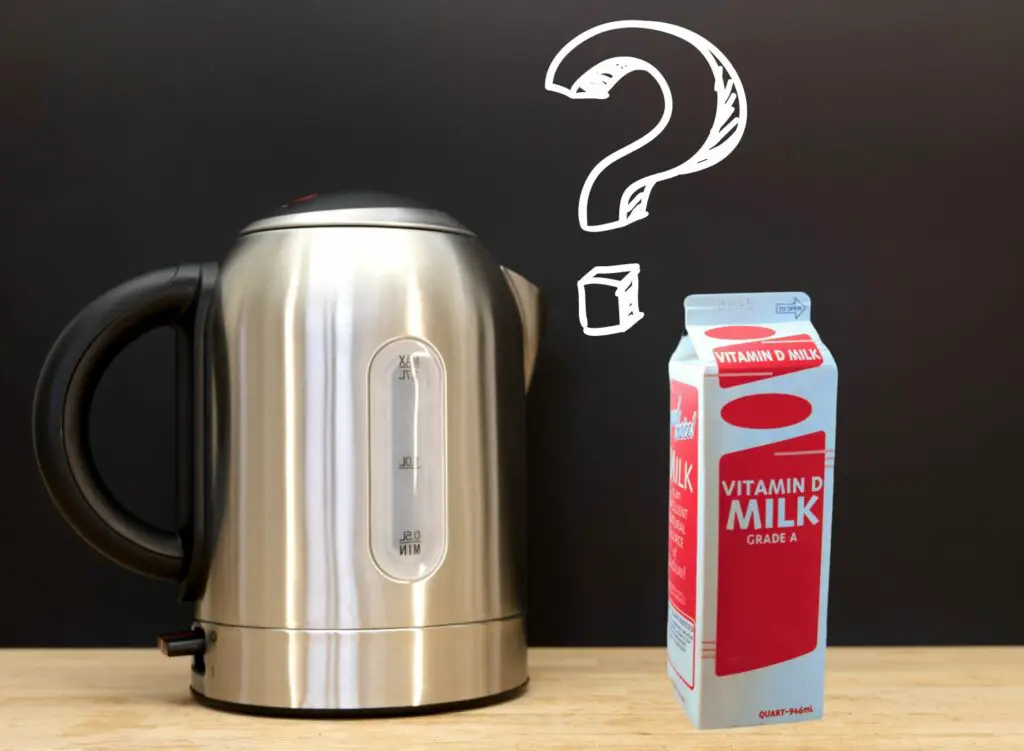
Yes, technically, it is possible to boil milk in an electric kettle. It’s akin to trying to cook eggs in an electric kettle, frying an egg in a coffee maker, or baking bread in a microwave. It might be feasible, but it’s hardly the most suitable tool for the task and might not yield the best results.
That means you could do it, but it may not be the wisest idea.
While electric kettles can heat milk in no time, you expose yourself to the possibility of many things going wrong. And believe me, there are lots of those because electric kettles are meant to boil water, not milk. These two liquids may seem similar, but their behavior when heated can differ in surprisingly significant ways.
Electric Kettles Boil Water, Why Shouldn’t You Boil Milk?

Despite being liquids, water and milk behave very differently when exposed to high temperatures.
If you have boiled milk beforehand, odds are you already know how fickle it can be—within seconds, milk turns frothy, burns, and overflows from the pan and into your pristine stovetop. Compare and contrast with water, which boils easily and steadily releases steam.
The difference? Milk is rich in proteins and fatty acids, unlike water.
I am sorry to be a bit sciency now, but when the milk boils, these elements create a layer on top, preventing air bubbles from escaping as quickly. The layer stabilizes these bubbles, which makes them easy to pile up on top of one another—thus making that distinctive foam that eventually spills over[1].
Electric kettles are made with boiling water in mind. That means they cannot really handle anything fundamentally different, including milk.
What Can Go Wrong When You Boil Milk In an Electric Kettle?
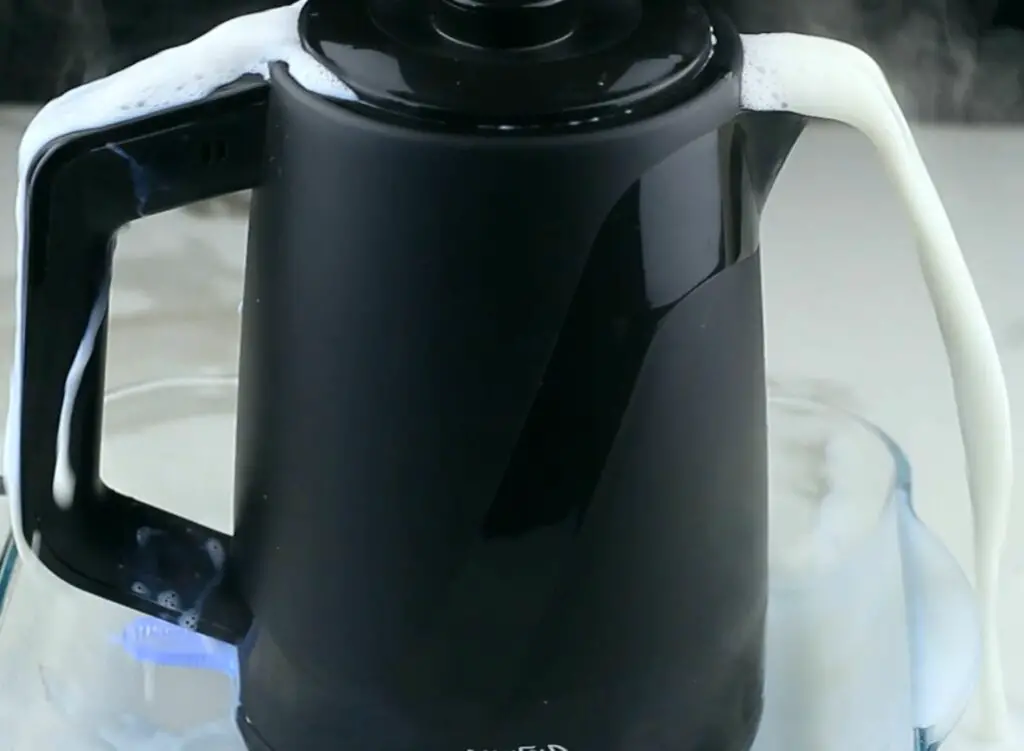
Trying to boil milk in an electric kettle can be a risky ordeal. From bacterial growth to severe burns, many things could go wrong if you are not careful.
1. Milk Can Leave Residue Inside The Electric Kettle
Cleaning milk residue inside the kettle may be harder than you think, particularly around the smaller areas, tubular heater, or other hard-to-reach segments. If you fail to clean it perfectly, you risk bacterial growth, unpleasant odors, and drinking cloudy tea for weeks.
What’s worse, the film that forms after boiling milk will coat the surface the same way it sticks at the bottom of your saucepan, and any residual substance could eventually cause the kettle to malfunction.
2. Milk Can Boil Out Of The Electric Kettle
As explained beforehand, milk’s protein and fat content can make it easy for boiling milk to spill over. Thus, if you do not constantly monitor your kettle, it can easily spill and overflow, even if you don’t fill the kettle up all the way.
Since most electric kettles have closed designs—that is, they have lids that may make it hard to gauge the heat level—it may be challenging to know when milk is reaching its boiling point.
3. The Milk Can Burn
Depending on the design, some electric kettles have sensors that automatically detect boiling temperatures. When used with water, these sensors turn off the electric kettle, preventing accidents.
However, boiling milk works differently. As explained before, boiling milk creates a thin layer of protein and fat, which prevents steam from releasing steadily as it does with water. As such, the sensors in the electric kettle may not detect the boiling in time, which may result in burnt milk.
4. Burnt Milk Can Damage The Electric Kettle
If the sensors in the electric kettle don’t shut off the system, your kettle will continue to heat the milk nonstop until it burns. But that’s not the only thing that can burn.
Continuous use can overwork the heating element and damage its inner components, while burnt milk can stick to it and worsen the problem.
5. You Can Burn Yourself
Sadly, your milk is not the only one that can get burnt.
Due to its foamy and reactive nature, boiling milk can overflow easily from the kettle and into your unsuspecting hands. Likewise, it may be hard to gauge how hot the milk is, and you could accidentally burn yourself while pouring it.
How To Safely Boil Milk In The Electric Kettle
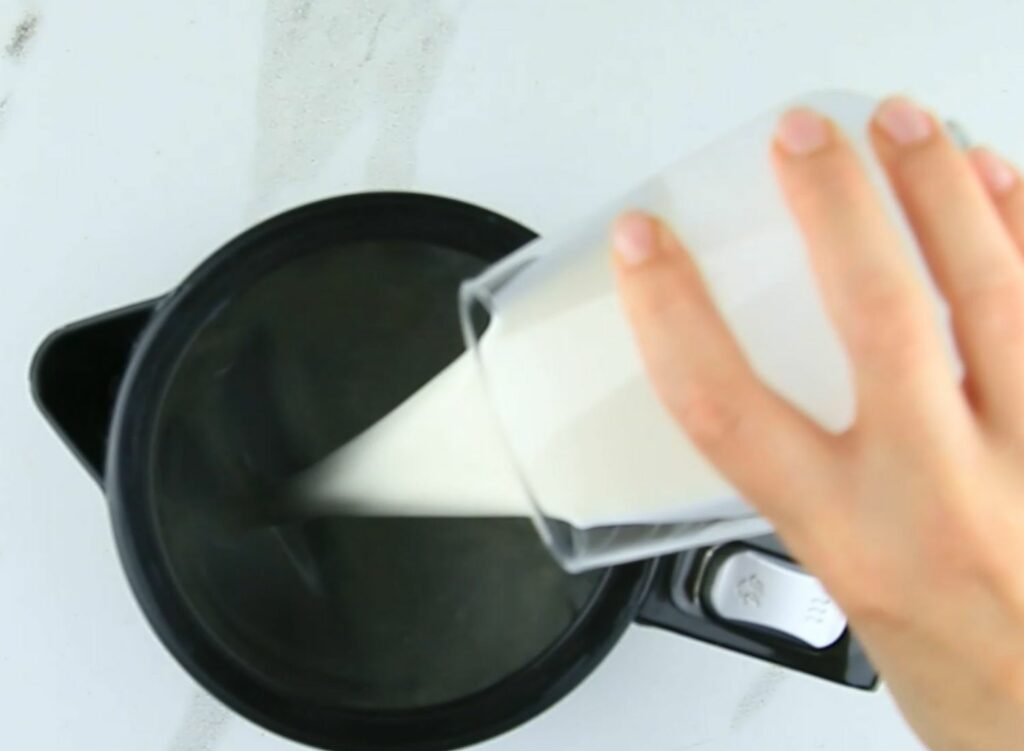
Disclaimer: We take no responsibility for any milky kettle explosions, impromptu fire drills, or surprise late-night cleaning sessions that may occur if you decide to take the ‘boiling milk in a kettle’ route – proceed with caution and an apron!
Alright, now you know every single thing that could go wrong. And as you can see, there’s a lot of those.
But when there’s a will, there’s a way, and if you’re determined to boil that milk with your electric kettle, I’m here for you. You can do so and minimize all potential risks, but only if you follow instructions carefully and consider what could go wrong.
- Make sure your electric kettle is clean and dry.
- Pour the desired amount of milk inside the kettle. I would suggest trying to keep the quantity small and not going over half of its total capacity, as this would reduce the chances of spillage during boiling.
- If you can, try to keep the lid off or open during the boiling process, as it will make it easier to keep an eye on the milk and will keep the temperature from rising too fast.
- Start boiling your milk. Keep an eye on the milk; getting distracted can spell disaster for your kettle and counter.
- Do not let the milk reach a full boil, and certainly don’t count the kettle to switch off automatically. If possible, turn it off right when the milk starts to boil or is about to boil.
- Once off, transfer the hot milk into another container to prevent further heating.
- If you can’t turn off the kettle, just unplug it from the wall. If you left it a bit too late, and the milk starts to overflow, add a pinch of water to the mix to help it settle, or stir it with a spoon if there is no risk of burning.
Which Electric Kettle Is Good for Boiling Milk?
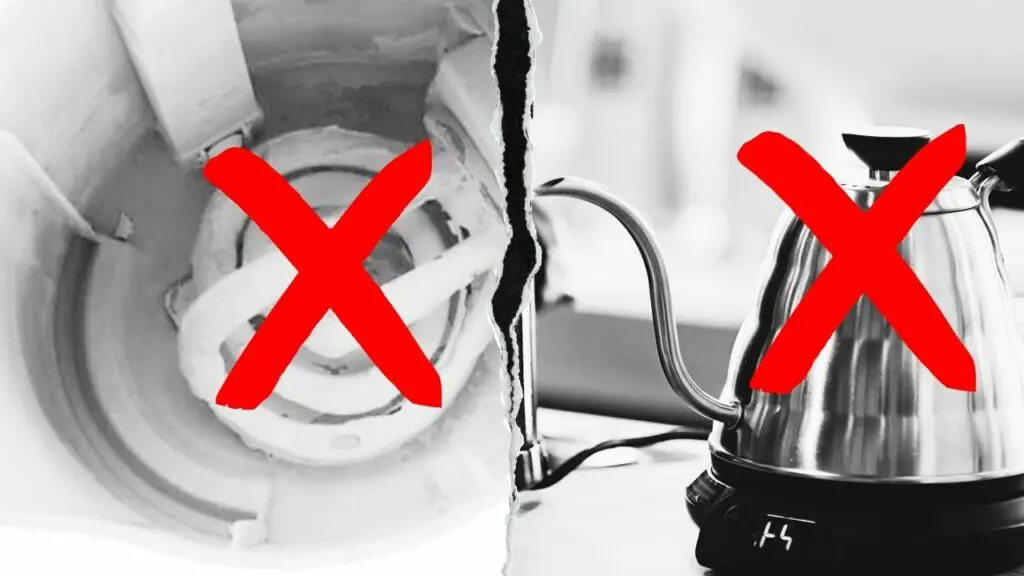
When looking for an electric kettle that’s suitable for boiling milk, there are several key features you should keep an eye out for:
- Material: As you’ve mentioned, opt for stainless steel or glass construction. Stainless steel is durable and usually faster in heating, while glass allows you to see through, which can be helpful to monitor the milk. Both are safer options compared to plastic.
- Concealed Heating Element: Ensure that the kettle has a concealed heating element. This means that the coil is hidden and not exposed inside the kettle, which makes it much easier to clean and prevents the buildup of milk residues around the coil.
- Wide Opening: Choose a kettle with a wide mouth or opening. This will not only allow for easier pouring of milk but also make it much simpler to clean the inside of the kettle by hand.
- Manual Shut-Off Feature: Look for a kettle with a manual shut-off feature or a switch that you can easily turn off when the milk is boiled to your liking. This gives you more control compared to kettles that shut off automatically, which might not always be at the desired boiling point of the milk.
- Temperature Control: Some kettles come with adjustable temperature settings. This can be particularly handy for boiling milk, as you may not want it to reach the same temperatures as water, which could cause it to overflow or burn.
- Ease of Cleaning: Besides the wide opening, check if the kettle has a smooth interior without too many crevices where milk could get stuck. This will make cleaning much more straightforward. Certainly, don’t get anything with a small gooseneck spout which is super hard to clean inside.
- Durability and Brand Reputation: Opt for a kettle from a reputable brand known for durability and good customer service; you may need some.
So, if you do plan to boil milk in your kettle quite often, then I would recommend you check out the COSORI Electric Kettle below. Not gonna lie; it’s a pretty neat option.
TAP ON IMAGE TO VIEW PRICE
It’s got this combo of stainless steel and glass, which means you can actually see what’s happening inside – no more surprise milk volcanoes, right? And hey, no plastic touching your hot drinks because the inner lid is stainless steel too.
TAP ON IMAGE TO VIEW PRICE
The cleaning part? Piece of cake – the opening is wide enough, so you won’t have to do any weird hand acrobatics. The sweet spot is the price – it’s not crazy expensive.
So, if boiling milk does shorten its life, it’s not a colossal bummer for your wallet. Maybe give it a glance and see if it ticks your boxes!
How To Clean Electric Kettle After Boiling Milk?
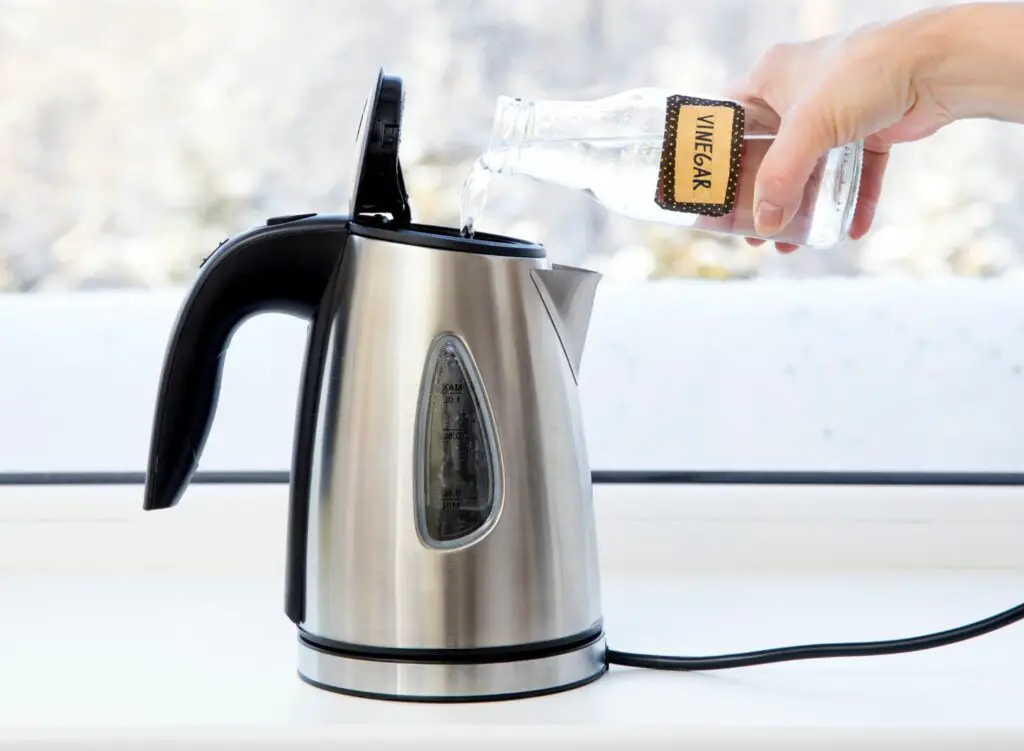
So, you succeeded—congratulations! Now that the milk has been boiled comes the next part: cleaning.
Milk always leaves residues, even more so when boiled, and a misstep in the cleaning process could spell the ruin of your appliance. Make sure to rinse your kettle with water to remove most of the milk residue, then proceed with the following techniques.
1. Clean With Vinegar
Prepare a mixture of ½ water and ½ white vinegar, pour it inside your electric kettle to half capacity, and boil it. Once it does, turn off or disconnect your kettle and let the liquid sit for half an hour.
Rinse it out and if you deem it insufficient, repeat. If your kettle smells of vinegar, pour clean water and boil until the scent vanishes.
2. Clean with Baking Soda
Fill your kettle to half capacity and add one or two tablespoons of baking soda, then bring it to a boil. Afterward, let it cool for half an hour before rinsing it with clean water.
Like the vinegar method, feel free to rinse and repeat until satisfied. Remember that under no circumstances should you scrub the heating element of your electric kettle with metallic sponges, as it can damage them. If you must, use a non-abrasive brush.
Always make sure to follow the manufacturer’s instructions for cleaning and maintenance of your kettle.
Conclusion: Should You Boil Milk In An Electric Kettle?
There’s an array of methods, gadgets, and tricks at your fingertips for boiling milk like a pro. But here’s the thing – using an electric kettle might not top that list for everyone.
Now, if you’re feeling adventurous and decide to go down the electric kettle route, let’s keep it real: things can get messy, and you don’t want to wreck your trusty kettle or, heaven forbid, get yourself in a sticky situation (literally!).
But, you know, sometimes necessity is the mother of invention. If the kettle is your only wingman, you can make it work. Just be hawk-eyed and keep tabs on that milk! The moment it starts throwing a frothy party, it’s time to hit the ‘off’ button. And don’t forget the aftercare – give your kettle some TLC with a good clean to keep it in the game for the long haul.
All in all, while the electric kettle might not be the milk-boiling hero we need, it’s there in a pinch if we play it smart.
Sources:
[1] New Scientist (2020). Why does milk spill over when it boils? Retrieved from https://www.newscientist.com/lastword/mg24833021-100-why-does-milk-spill-over-when-it-boils/.
